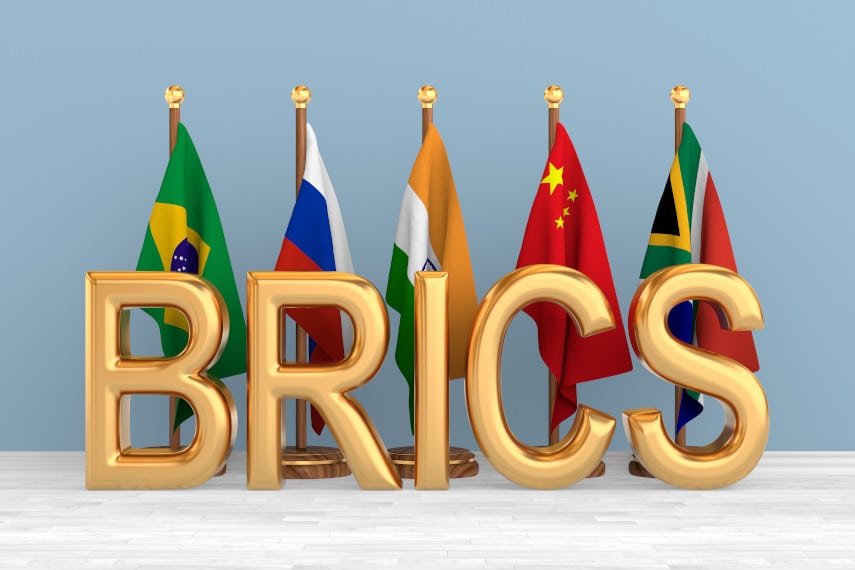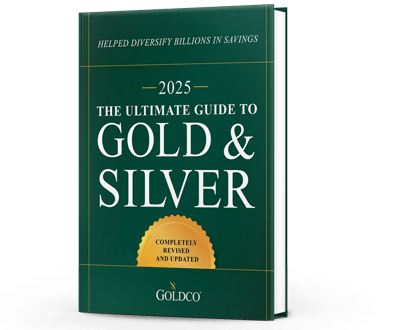6 Indicators of a Potential Recession
It seems that in the media today there are more and more mentions of the dreaded R-word: recession With growing economic uncertainty, the threat of potential recession seems to be growing as...
Economy

In the aftermath of World War II, the world found itself split between two competing political alliances. In the West, NATO formed among the United States, Canada, the UK, and the free nations of Western Europe. In the East, the Soviet Union and its Eastern European allies organized under the Warsaw Pact in direct opposition.
Many of the conflicts around the world that occurred throughout the 20th century ended up being proxy conflicts of some sort, with the US and its allies supporting one side and the USSR and the Warsaw Pact supporting the other. But despite the political fracture between East and West, there was really only one financial hegemon, the United States.
The US dollar became enshrined as the world’s reserve currency after the war, as the Bretton Woods monetary system that was ushered in saw the dollar acting as a proxy for gold. But even after President Nixon severed the dollar’s last link with gold in 1971, the dollar remained the world’s reserve currency.
The overwhelming majority of world trade today is settled in US dollars, and the US government has long enjoyed the dollar’s status as the world’s reserve currency, as that ensures a ready market for US Treasury debt. But cracks are beginning to appear in the dollar’s armor, and there could be some challengers to the dollar’s hegemony.
One of the most recent challenges to the dollar comes from the BRICS countries (Brazil, Russia, India, China, South Africa). While BRICS has to this point largely existed as an informal grouping of large developing nations, there are new calls to formalize the alliance and make it a competitor to the G7.
You could think of BRICS as a poor man’s G7, but with the potential to eclipse the Western world. The current BRICS members make up nearly 40% of the world’s population, and with China and India growing and developing their economies, could end up creating a significant counterpoint to the G7.
At the latest BRICS summit, membership was extended to six other countries: Saudi Arabia, the UAE, Argentina, Iran, Egypt, and Ethiopia. Not only would that push BRICS to a point where nearly half the world’s population was a member of the alliance, it also would bring in major oil producers, and that’s crucial.
For decades the US dollar has been propped up under the petrodollar system, in which world oil markets have exclusively used dollars, in exchange for US military and financial support to the Middle East. But that system could be breaking down.
The UAE and India recently settled their first non-dollar oil trade, using rupees instead of the dollar. If non-dollar oil trades become more common, it could dethrone the dollar’s status as the world’s reserve currency.
Lest you think that’s not going to happen, the BRICS countries make up 3 of the top 10 oil-producing countries in the world, accounting for 20% of world oil production. Add in the newly invited countries and BRICS would account for 6 of the top 10 oil producers and 40% of world oil production.
On the consumption side, BRICS accounts for 4 of the top 10 oil consumers and 27% of world oil consumption. Adding Saudi Arabia would boost that to 30%. So BRICS countries dropping the dollar isn’t anything to sneeze at.
The threat to the dollar doesn’t just come from the BRICS countries dropping the dollar and adopting their own national currencies for international trade. There have already been proposals to create a new gold-backed currency for use by BRICS nations in international trade. And if such a currency were to catch on, it could accelerate the dollar’s demise.
We’re at an inflection point right now where the groundwork is being laid to disrupt the dollar’s hegemony. China is actively pushing for BRICS to become a competitor to the G7, which could set up a financial or monetary Cold War in the 21st century.
On the one side would be the United States heading up the G7, pushing for continued use of the unbacked US dollar whose value deteriorates every year due to unending inflation. On the other side would be BRICS, with a potential gold-backed currency that could even gain purchasing power each year as long as the currency was defined as a particular weight of gold and wasn’t redefined.
Just as countries in South America and Africa were caught between the US and USSR during the Cold War, with East and West competing for client states, so too could the 21st century become marked by a financial struggle between the G7 and fiat currencies on the one hand, and BRICS and gold-backed currencies on the other. The US would obviously envision itself as the good guy, and paint BRICS as a kind of financial Warsaw Pact. And the dollar’s continued relevance could be dependent on who wins that struggle.
If BRICS does become a long-term rival to the G7, and a gold-backed BRICS currency does supplant the dollar as the primary currency for international trade, it could be the death knell for the dollar. But it could be quite beneficial for gold.
Those with exposure to the dollar, or whose wealth is tied up in dollar-denominated assets, could find that the dollar’s demise could lead to a decreased value of their wealth. Americans have benefited greatly from the dollar’s status as the world’s reserve currency. But if demand for the dollar falls, the dollar could lose even more value than it already has.
You already know how badly inflation has eaten away at your purchasing power, as your dollars no longer buy as much as they used to. But a dollar that’s no longer in demand from the rest of the world could see its purchasing power fall even more.
That’s one reason so many people are trying to protect their wealth by buying gold. They see what’s coming, and they’re determined to protect their wealth against potential devaluation.
The US dollar has lost over 97% of its purchasing power since 1913, while the gold price has gained more than 9,000% since then. Is it any wonder why people are choosing gold to protect their financial well-being over the long term?
Whether you’re looking to protect your retirement savings with a gold IRA or just looking to buy some gold coins to keep at home, Goldco has options available for every budget. With over $2 billion in precious metals placements and over 5,000 5-star reviews, Goldco works hard to provide quality products and exemplary service to our customers.
Call Goldco today to find out why so many people trust Goldco to protect their hard-earned savings with gold.

